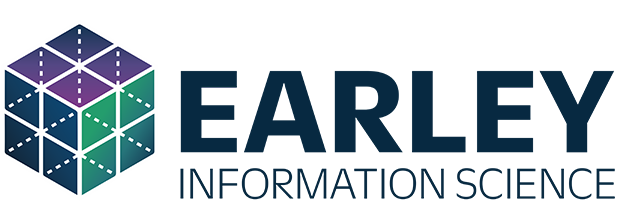Below is our recent interview with Seth Earley, CEO & Founder of Earley Information Science:

Q: Could you provide our readers with a brief introduction to Earley Information Science?
A: Sure. Earley Information Science is a professional services firm that has been around for 25 years. The work that we’ve done over that period of time has always been about information management strategy and execution. We have a tagline that says, “We make information more findable, useable, and valuable.” That can be anything from a large website with millions of products, or it could be the internal ability to find and locate needed documents, content, or knowledge. It could also have to do with optimizing the marketing technology stack or developing and improving marketing ecosystems.
Our business has four main pillars: product information/ product data; content optimization; knowledge engineering; and customer engagement. Customer engagement is enabled through journey models that identify what the customer needs and when. Then product information and related content (reviews, descriptions, articles, specifications, etc.) can be structured in a way that streamlines their experience. All of this (what is important to the customer and why) is ultimately informed by knowledge of merchandizers, marketers, product managers, and product engineers about the best ways to serve them, solve their problems and communicate in a way that resonates with them.
Product information relates to creating product catalogs, optimizing the presentation of products on the web, and making the information in them more findable. And it could entail working with customer journey models to understand the features and attributes most important to them in their buying process.
Content optimization includes the marketing ecosystem work that I mentioned. This area addresses the types of technologies you need to engage with customers and deliver content that is going to serve them throughout the customer journey. This allows your web site to surface content to customers in the context of their needs (both the products and the information that supports decision making and selection).
How do we leverage the things that the organization knows about customers, the marketplace and the company’s solutions? Through knowledge management (KM) and knowledge engineering (KE). KM and KE cuts across a number of areas. KM refers to many of the collaboration and human factors including workflow processes, governance and change management whereas KE is more of the mechanics of content models and technologies to enable the digital machinery and activation of insights in the digital experience. When we build virtual assistants, for example, we have to have a knowledge engineering and a knowledge architecture foundation. The same type of architecture will actually make information more findable by your employees. I like to say that the things you need to train a virtual assistant are the same things you need to train employees. So you can actually architect this in such a way that content can be repurposed across different systems and tools and use cases. That way, you can gain a lot more value from the knowledge, which includes human judgment and insights that need to be applied to serving the customer.
It’s important to remember that a machine is not going to figure out everything for you. It’s not going to understand your customer needs in the way that a human would–you have to tell it. The knowledge engineering and architecture is really the embodiment of that expertise, including the capture and application of that expertise both internally and externally. Knowledge portal search or semantic search would be part of that. Agents and virtual assistants will benefit equally from that work.
As you can see, everything is in the context of the customer journey. This last pillar entails building high fidelity journey maps, which are different from ordinary journey maps. You have to put the customer journey in the context of what your technology can do with it. We actually build metadata models that describe the customer, build the schemas and the attributes that describe where they are in their process, and their journey. That is the way to give customers the right content, or the right products, and apply your insights to serving those customers. That’s where all the pieces come together for a more of a holistic approach.
Collectively, these elements (product information, content models, knowledge architecture and customer attributes) are part of the Information Architecture of the enterprise.
These elements are critical to digital transformations (see “How IA Supports Digital Transformation)
 Recommended: Masters in Clarity Helps Clients Clarify Their Idea Worth Sharing And Implement Business Growth Systems
Recommended: Masters in Clarity Helps Clients Clarify Their Idea Worth Sharing And Implement Business Growth Systems
Q: Can you tell us something more about your solutions?
A: One of the things that distinguishes us from other organizations is that we typically leverage the software and technology that an organization already has. We don’t sell people a stack of software to solve the problem. We don’t come in and immediately recommend new technologies. We look at the process and the needs of the organization. As it turns out, many global enterprises already have all the software they need. When there are gaps, we have a process for selecting vendors, but that is not where we start. In selecting technology that approach helps you control the procurement process rather than being controlled by the sales process. We have a whole series of methodologies around that.
In many cases, the needs of the enterprise relate to structured data and content, and how aligned that structure is with a given business process. Issues also arise about whether the data quality is adequate and if content and data curation is being done properly. This applies to both structured and unstructured data. And what’s interesting now is you start to see this intersection of the data science and hard data with unstructured content.
Integrating structured data and content provides the “what” and the “why”—we need to say what happened (the data) and why it happened (insights and judgement about the data). Then determine what do we do about it. It is about integrating those learnings into the organizational processes and the fabric of the organization through the knowledge architecture.
Many of our customers, who are doing work in artificial intelligence and machine learning, are finding that because they don’t have the right foundation around their information, it’s very difficult for them to scale their machine learning efforts. I came up with a phrase a couple of years ago: “There’s no AI without IA,” which is a title of an article I wrote for IEEE. There’s no artificial intelligence without information architecture. That phrase has been quoted by others and picked up in various places such as the MIT Center for Information Systems Research. Ginni Rometty the CEO of IBM used it at Davos, Switzerland, when she was talking at the World Economic Forum, about the challenges of artificial intelligence.
What it means is, machine learning and AI can’t do it all. You really do need to tell the programs that are part of machine learning and AI what is important to your organization such as the names and details of products, the services that are offered, processes, customer details, tasks, your people. AI needs data and that data needs what is called a reference architecture. A specialized manufacturer will have processes and products that are unique to their world. AI can identify patterns around product purchases to help with personalization, but what products are appropriate for what applications, environments, roles, industries, etc. What personalized content is appropriate for the various types of buyer? How do they solve their problems? That information needs to live somewhere. AI can help present it to the right people, but it cannot tell what the right content is without that information being described in a way that humans can understand.
Many companies already know what gives them their competitive advantage, and these are the things that need to be embodied in enterprise architecture in order to leverage the emerging technologies and optimize the existing technologies. There’s a lot of basic blocking and tackling that needs to go into just proper use of the tools that an organization already has.
The solutions are really about how to solve very specific information management problems. Sometimes it can be very large scale. So it might be a product data project that could last a couple of years and cost millions of dollars. Or it could be an intelligent virtual assistant or a knowledge portal. But there are also smaller things that can be done, smaller interventions.
But the biggest thing is to teach the organization how to carry out these activities on their own. That includes the methodologies and how to apply them and build maturity around them. It is also important for companies to develop their internal competencies, so they don’t solve the problem again in 18 months and so they can continually evolve in this in this area. We have also developed governance processes to make sure that the same problem does not come up again. We put metrics behind that. This is data-driven decision making, which is a very hot topic these days. We build metrics-driven governance playbooks that help make decisions based on data.
Q: Seth, your new book is available for pre-order on Amazon. What is it about?
A: The book is called The AI-Powered Enterprise and it’s really about the role of ontology, which is something that describes all of the knowledge and all of the elements and all of the organizing principles in the business. So, it consists of multiple taxonomies, and thesaurus structures, and master data. It’s really that that knowledge scaffolding of the enterprise. The reason ontology is so important is that powers the tools and technologies that can then provide competitive advantage.
Ontology operates all across the enterprise and all across the information ecosystem, because you do need a source of truth, you do need consistent terminology, you do need people to speak the same language, and you need your systems to do that too. Often, companies have disconnected systems and siloed applications and incompatible data formats. These systems require lot of manual tweaking and adjusting of data and data preparation and so on. That creates unnecessary friction in the organization. The book is talking about how the enterprise needs to build these foundational capabilities in a sustainable and a cost effective way if they are to get value from AI and compete in the future.
Many of the current AI initiatives that companies have launched are in fact not sustainable. A lot of the virtual assistants and conversational AI applications are brittle, or static. Many of them are difficult to scale or repurpose and that’s not sustainable either. To build agents that will serve different purposes, and build at scale, they have to be built on a framework that’s repeatable.
The book helps organizations understand what goes into effective development of AI solutions, what’s particularly interesting about AI, and how we need to think about AI projects. Number one, which applies to any type of technology project, is you need to understand your business objectives and your business problems and how to measure progress toward your goals. That goes for everything. And then in the AI space. There are some unique pieces, but this book is all about how an organization can make many, many different improvements and interventions that add up to a transformation. Tom Davenport, who wrote the AI Advantage, talks about how these technologies are incrementally better ways of doing business which all add up to a significant transformation. The AI Powered Enterprise includes case studies and stories about how organizations are doing these things- including both the successes and some failures, since people can learn from them as well.
Q: How can AI transform enterprises?
A: The best way to use AI to transform your enterprise is through incremental improvements, rather than a moon shot or “We’re going to change everything” type of project. There are lots of little improvements throughout the organization that are possible which can add up. That’s how you have to think about these things. Looking at the organization holistically, is a good first step—looking at the knowledge flows and understanding where you can have very specific interventions that are going to improve the way people can get their jobs done.
Consumers today want a personalized experience, which requires anticipating their needs. It’s really about how all of these tools can be brought to bear on many different problems, but it always comes back to things like use cases, scenarios, data and content, and, of course, business objectives.
Incremental changes can add up to a larger transformation. There are many enterprise level programs that cost tens of millions of dollars and become very risky. Those can be successful with the right foundation (the data and architecture). If that foundation is not solid, they will not achieve their objectives or will fail outright. Plus, it’s very difficult to rip and replace everything in an established legacy organization. It’s too disruptive to do that. Unless you’re born digital or if you are have a greenfield and you’re starting from scratch, then you have to deal with many systems that are already in place. You’re going to look for opportunities to move the needle in small but significant ways. For example, AI gives you the ability improve the accuracy of predictions. These predictions can be anything from predicting what documents somebody wants when they put in a keyword to predicting that a customer is planning to leave the organization. Transforming your organization through many smaller applications of AI will take different forms depend on your industry, your competition and the needs of customers.
Although some industries have been forced to make monumental changes, most don’t need to think of AI as a giant project. Think of AI as solutions to very specific problems. You have to understand each of those problems in order to solve them and you need the data to power the AI. As you go about implementing more and more of these applications and solving these problems, they add up to a large digital transformation. Digital transformation is iterative and you’re always going to be going through that process, and AI certainly has to be part of the deal in terms of plans for the future because every technology vendor is embedding some form of machine learning in their offerings.
 Recommended: Land F/X Automates The Most Repetitive And Time-Consuming Portions Of The Design Process While Ensuring Accuracy
Recommended: Land F/X Automates The Most Repetitive And Time-Consuming Portions Of The Design Process While Ensuring Accuracy
Q: What are your plans for the future?
A: First, we are hoping to bring more ontology based solutions to our customers. Ontologies represents a holistic approach to the things we discussed and are incredibly powerful and correctly designed and deployed. We are building out targeted capabilities around areas at the intersection of product data, content, customers, knowledge and AI (for example enabling conversational commerce where people can learn about, price, configure, order and troubleshoot products through chat, or a Siri or an Alexa type of interface). We are working with platforms to orchestrate the customer experience that are so important to organizations including customer data platforms, product information systems and personalization engines. We’re not a software provider, but we have tools that are accelerators that help us get to results more quickly for our customers. Our capabilities in these areas can help an organization make the best use of new and emerging tools and set the organization up for success.
Our future plans are to scale EIS to be able to bring these approaches to more businesses, because it’s such an enormous problem. Every organization will benefit from the types of approaches that we can bring to the table, so it’s about exploiting those emerging technologies, solving specific problems with measurable outcomes, and being able to provide our customers with competitive advantages in the markets that they are serving.
Activate Social Media:


